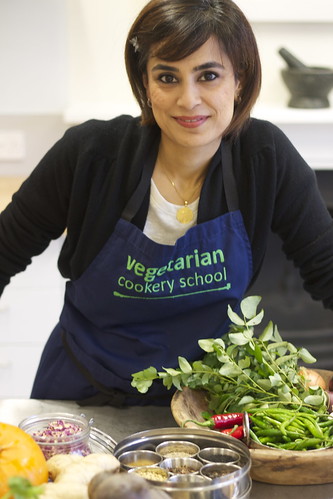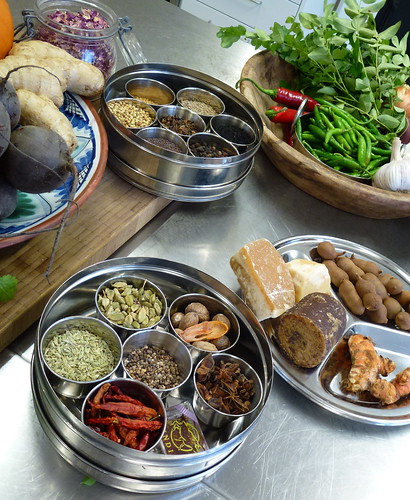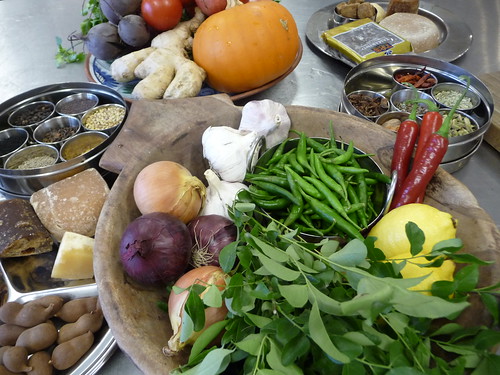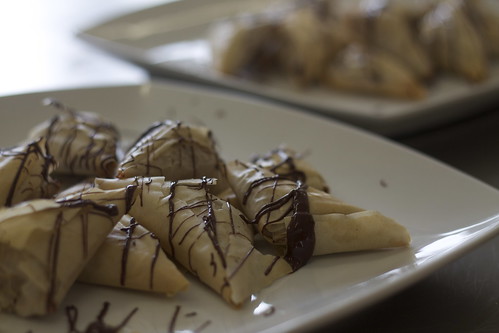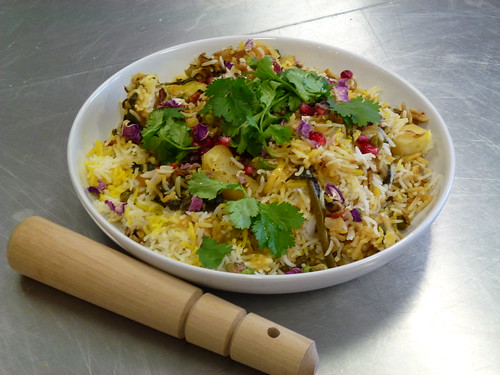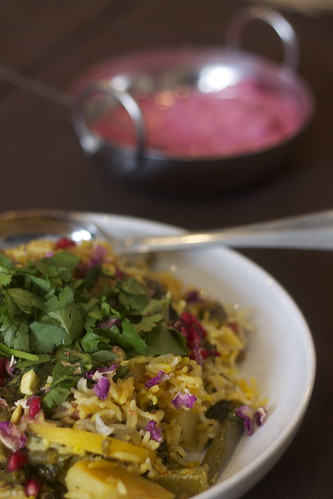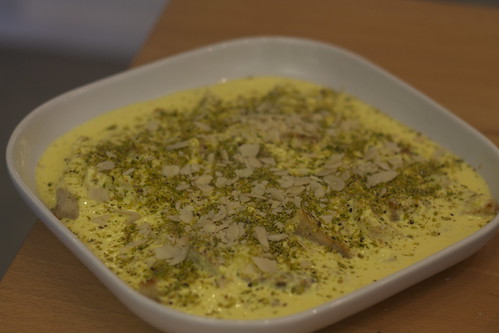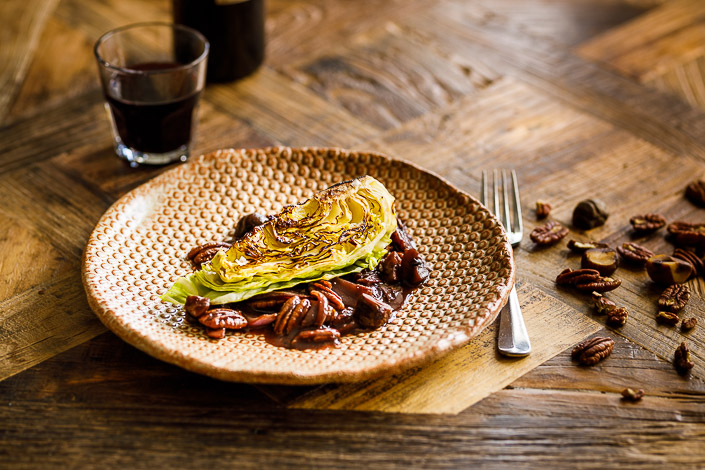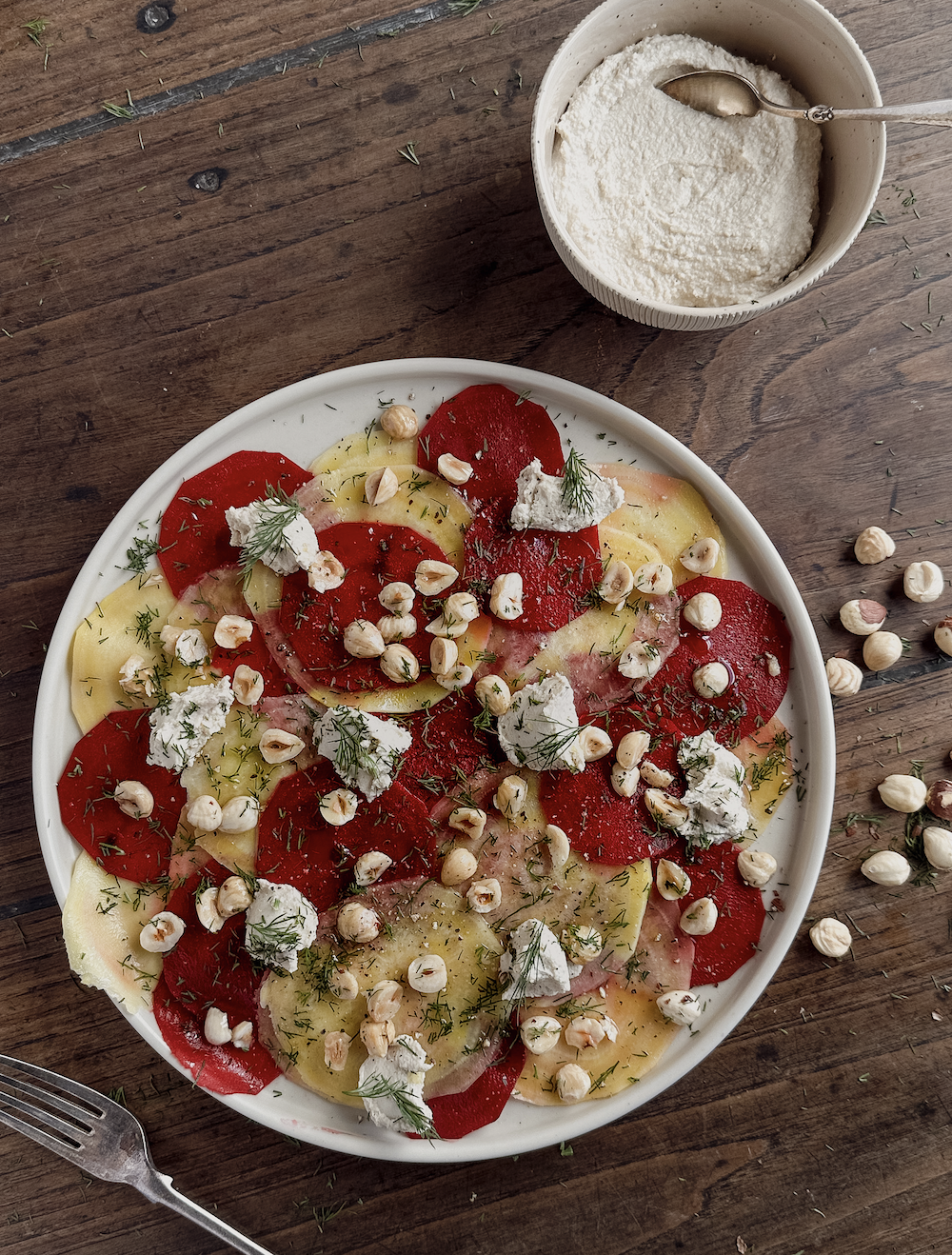Pakistani Autumn Feast with Sumayya Usmami
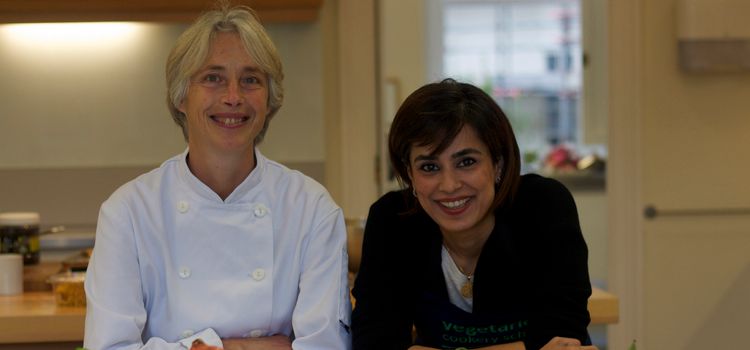
Last week guest chef Sumayya Usmami of My Tamarind Kitchen took us on an inspiring tour through Pakistan with her Autumnal Pakistani Feast. Here is a recap of the day from our own Christopher Robbins.
Sumayya Usmami was brought up in Karachi in Pakistan and is a natural cook, trained by generations of mothers, as she says:
"I grew up in a family where all the women from my paternal grandmother (Dadi jan), my maternal gran (Nani Mummy) and most of all my mom made traditional family recipes with deep historical roots and most of all they all reinvented and invented recipes every time they were in the kitchen. We all cooked by estimation “andaza” in my family that the best food is cooked that way in the sub-continent especially. Cooking is all about senses and ‘andaza’ is the 6th sense of cooking!"
Borders between countries are interesting phenomena. Given that most are arbitrary for the enclosed cultures and ethnic groups, it is remarkable how often they also enclose distinctly different cuisines from those of neighbouring countries. Pakistani food and cooking is a delicious and surprising case.
Pakistan was most recently separated from its south-eastern neighbour, India, in 1947. But it has older borders with Afghanistan, Iran, and China and right across its northern neighbours ran ancient trade routes between China to the east and Turkey and Arabian states to the west.
In the UK, despite a long history of immigration from both India and Pakistan, and the resulting plethora of unremarkable and usually unmemorable ‘takeaways’ lining every town and village high street, no obvious distinction between the cuisines of either country guides the ‘take-away’ customer. These ‘takeaways’ are the second most popular choice after the recently ascendant burger, yet the regular and repeated purchase remains one of habit and convenience and not of understanding or discrimination among flavours.
Demuths Cookery School has several Indian cookery courses in its repertoire. In September, Urvashi Roe gaves us a wonderful insight into Gujerati Cooking. Sumayya's class was the first Pakistani food course and what a revelation.
Sumayya explained the marked differences between the two countries' cuisines. Pakistan is absolutely to the north-west of India and to the southern edge of the ancient trade routes from Mongolia through China, Afghanistan into the Arabian states and across into Turkey. Trade was never far from wars and both these disruptions have left their influence on Pakistani food.
For example, the Mongol influence on food was simple flavours, but heavenly saffron and, unlike the many regional cuisines of India, very little use of chilli. From the West, the Turkish traces are of pistachio nuts and much richer food flavours, which meant more and greater quantities of spices in cooking. Meat was eaten in greater quantities, especially barbecued which came from the Arabian neighbours.
Despite the preponderance of ‘tandoori’ dishes in Indian restaurants in the UK, the tandoor oven originated in Pakistan, along the Indus valley, probably as early as the Bronze age. It remains a defining characteristic of traditional Pakistani cooking.
Pakistani food is thought to be dominated by meat. This is true, but traditional cooking also boasts plenty of vegetable dishes which rely on the freshest of vegetables, especially in the South. Fenugreek leaves (methi) are popular, though little fenugreek seeds appear in the cooking. Green chillies appear, but are much milder than in India, and are used principally for the ‘crunchy’ texture rather than ‘heat’.
More significant differences are found in the richer flavours of Pakistani food. Top spices are cloves, cinnamon, cardamom and star anise. All are used with a delicious heavy hand. Ginger and garlic are featured in most savoury recipes, and the carbohydrate staples are rice (basmati) and breads (usually cooked in a tandoor oven). And, I mustn’t forget one of Sumayya’s own favourites, dried rose petals, the most aromatic kind, not anything like those from the petrol station forecourt!
Sumayya described the essence or skill in cooking Pakistani food as being able to ‘balance’ the four tastes: heat, spice, sour, and sweet. I was struck too with the light touch on the cooking oil. All her food was light and delightfully devoid of the greasy mouth-feel too often associated with Pakistani and Indian food.
Channa Boondi Chaat
Her feast menu (see below) started with two contrasting street foods; A Channa Boondi Chaat (Chickpea and fried chickpea flour ‘drops’ with potatoes, pomegranate seeds, yoghurt, coriander leaf, mint and tamarind; and a sweet samosa filled with ripe (and I mean RIPE) banana, coconut, cardamom and jaggery.
Banana, Coconut, Jaggery & Cardamom Samosas
The samosas were wrapped in filo pastry, which kept them light, and were drizzled with chilli chocolate.
It was interesting that Sumayya gave most attention to the simplest item in the recipes – rice. (The same reverence and detail was heaped on the rice in Simi Rezai's Persian Cookery Course earlier in the summer.). Rice was both a valuable ingredient and had to be cooked just so or the cooks reputation suffered. Basmati rice was standard and the best quality available. Sumayya’s method (there must be as many methods as there are rice grains in a kilo of best basmati) was prefaced with a note of solemnity and of precision. Rice is soaked for 30 minutes in water to wash off any external starch powder as well as as grit. The rice is drained in a colander while the water to cook it in is boiled. The rice is tipped into a saucepan and covered with the boiling water as the heat is turned on to bring the rice to a boil.
Shahi Green Vegetable Biryani
For the Shahi Green Vegetable Biryani, Sumayya said the rice was cooked until it was firm, but not fully cooked as it is layered alternately with the vegetables, sealed in the saucepan with a tight fitting lid and a layer of foil, then left on a very low hear for 20 minutes to finish cooking and to blend the aromas from the spices.
This biryani was an eye-opener. I think. Many biryani dishes in restaurants tend to have rather oily rice. This recipe uses rather less oil (oil plus ghee) for the amount of rice, then it is dispersed around a significant weight of vegetables which leaves the whole dish showing a light and oil-free rice component. It is also a very useful vegetable dish, as this ‘whole meal in one saucepan’ concept is most often used for meat dishes and a vegetable biryani is uncommon…..but delicious.
Khattay Kadoo
Two dishes on the day that impressed everyone were the Beetroot, Jaggery and Cumin Raita (which combined the ethereal blend of raw beetroot, roasted cumin, coriander, green chilli, fresh mint, jaggery, and whipped thick yoghurt) and a rather British sounding Shahi Tukra, or Mughal style bread and butter pudding. The latter turned the usually rather bland British pudding into something both exotic and simultaneously British. That was a remarkable feat, as desserts don’t feature at the end of a Pakistani meal.
Shahi Tukra
The magnificent Shahi Tukra comprises triangles of thick-sliced white bread that is fried golden in ghee then soaked in sugar syrup, arranged in a shallow dish and covered with a thick ricotta-based milk-custard flavoured with saffron and crushed cardamom. This aromatic temptation was decorated with crushed almonds and pistachios scattered over the top.
If only the Mughal influenced continued westward after infusing with the Ottoman empire, just think how exciting British rice pudding, trifle and apple Charlotte might be today…….
Pakistani Autumn Feast Menu
Street Eats
Channa Boondi Chaat
Banana, Coconut, Jaggery & Cardamom Samosas
with Chilli Chocolate drizzle
served with Cardamom Doothpatti Chai
Khana/Mains
Sooki Mash ki daal
Urid lentils cooked dry & topped with
a tempering of ghee with cumin,
dry red chilli topped with coriander & ginger
Shahi Green Vegetable Biryani
A Mughal-style green veg biryani
topped with pistachios & rose petals
Khattay Kadoo
Piquant yellow pumpkin
Beetroot, Jaggery and cumin raita
Freshly baked naans
topped with nigella & poppy seeds
Metha/Pudding
Mughal-inspired bread pudding
with saffron, pistachios and almonds
Christopher Robbins © October 2012
Photos of the Pakistani Autumn Feast Dishes by Sumayya Usmami.

